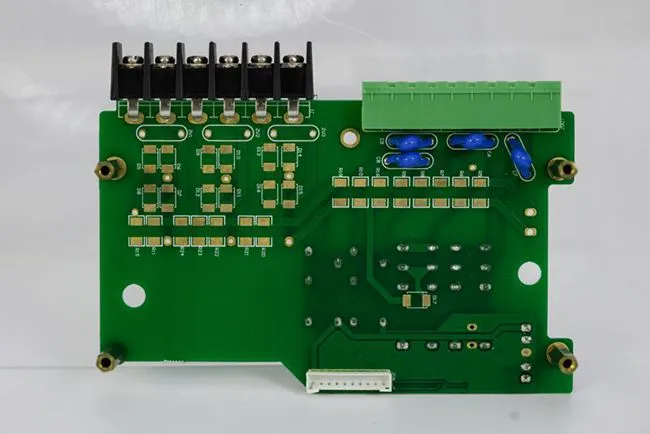Top 3 Applications for Printed Circuit Boards (PCBA)
Printed Circuit Board Assembly (PCBA) plays a crucial role in modern electronics, forming the backbone of countless devices and systems. The top 3 applications for PCBAs are consumer electronics, automotive systems, and medical devices. In consumer electronics, PCBAs power smartphones, laptops, and smart home devices. Automotive systems rely on PCBAs for everything from engine control units to advanced driver assistance systems. In the medical field, PCBAs are essential components in diagnostic equipment, patient monitoring systems, and implantable devices. These applications showcase the versatility and importance of PCB assembly in our technologically driven world.

Consumer Electronics: Powering Our Digital Lives
Consumer electronics represent one of the most ubiquitous applications of PCB assembly. From the smartphones we carry in our pockets to the smart TVs adorning our living rooms, PCBAs are the unsung heroes powering our digital experiences.
Smartphones: Compact Computing Powerhouses
Smartphones epitomize the incredible capabilities of modern PCB assembly. These devices pack an astounding amount of computing power into a remarkably small form factor, thanks to the intricate design and assembly of their PCBAs. The motherboard of a smartphone typically features multi-layer PCBs with high-density interconnects (HDI) to accommodate the numerous components required for cellular communication, Wi-Fi, Bluetooth, GPS, camera modules, and powerful processors.
PCB assembly techniques like surface mount technology (SMT) are crucial in smartphone manufacturing, allowing for the placement of tiny components like resistors, capacitors, and integrated circuits with incredible precision. The miniaturization trend in smartphones continues to push the boundaries of PCB assembly, with manufacturers constantly seeking ways to increase component density while maintaining reliability and performance.
Laptops and Tablets: Portable Computing Solutions
Laptops and tablets represent another significant application of PCB assembly in consumer electronics. These devices require PCBAs that balance performance, power efficiency, and thermal management. The main board of a laptop or tablet often incorporates multiple layers to separate power, ground, and signal planes, optimizing electrical performance and minimizing electromagnetic interference.
PCB assembly for laptops and tablets often involves advanced techniques like blind and buried vias to increase routing density and improve signal integrity. The integration of various interfaces such as USB, HDMI, and audio jacks also demands careful PCB design and assembly to ensure proper functionality and durability.
Smart Home Devices: Connecting Our Living Spaces
The burgeoning smart home market has created a new frontier for PCB assembly applications. Devices like smart thermostats, security cameras, and voice-controlled assistants all rely on carefully designed and assembled PCBAs to function. These devices often require PCBs with integrated wireless communication modules, sensors, and microcontrollers.
PCB assembly for smart home devices often prioritizes energy efficiency and long-term reliability, as many of these products are expected to operate continuously for years. Techniques like conformal coating may be employed to protect the PCBAs from environmental factors, ensuring longevity in various household conditions.
Automotive Systems: Driving Innovation on the Road
The automotive industry has become increasingly reliant on electronics, with modern vehicles containing dozens of PCBAs controlling various systems. PCB assembly plays a critical role in enhancing vehicle safety, performance, and comfort.
Engine Control Units (ECUs): The Brain of Modern Vehicles
Engine Control Units (ECUs) are perhaps the most crucial application of PCB assembly in automotive systems. These sophisticated modules manage engine performance, fuel efficiency, and emissions control. ECU PCBAs must withstand harsh under-hood environments, including extreme temperatures, vibrations, and exposure to various fluids and contaminants.
PCB assembly for ECUs often involves the use of high-temperature materials like polyimide and careful component selection to ensure reliability under demanding conditions. Techniques like wave soldering or selective soldering may be employed for through-hole components that require additional mechanical strength.
Advanced Driver Assistance Systems (ADAS): Enhancing Safety and Convenience
Advanced Driver Assistance Systems (ADAS) represent a rapidly growing application of PCB assembly in the automotive sector. These systems include features like adaptive cruise control, lane departure warnings, and automatic emergency braking. ADAS PCBAs often incorporate high-speed processors, sensor interfaces, and communication modules to process real-time data and make split-second decisions.
PCB assembly for ADAS components requires meticulous attention to signal integrity and electromagnetic compatibility (EMC). Techniques like controlled impedance routing and proper grounding strategies are essential to ensure reliable operation in the electrically noisy automotive environment.
Infotainment Systems: Merging Entertainment and Information
Modern vehicle infotainment systems showcase the convergence of consumer electronics and automotive technology. These systems feature PCBAs that integrate audio processing, display drivers, navigation modules, and connectivity interfaces. The PCB assembly process for infotainment systems often involves multi-layer boards with high-speed digital interfaces and careful thermal management considerations.
As infotainment systems become more sophisticated, PCB assembly techniques continue to evolve. Flexible and rigid-flex PCBs are increasingly used to accommodate complex geometries and tight packaging requirements within the vehicle's dashboard.
Medical Devices: Advancing Healthcare Through Technology
The medical device industry relies heavily on PCB assembly to create innovative diagnostic, monitoring, and treatment tools. PCBAs in medical applications must meet stringent quality and reliability standards to ensure patient safety and device efficacy.
Diagnostic Equipment: Precision in Medical Imaging
Medical diagnostic equipment, such as MRI machines, CT scanners, and ultrasound devices, all depend on sophisticated PCB assemblies. These PCBAs often feature high-speed digital circuits for image processing, analog front-ends for sensor interfaces, and power management systems for precise control of various components.
PCB assembly for diagnostic equipment requires strict adherence to cleanliness standards and often involves the use of speciality materials to minimize signal loss and interference. Techniques like micro via technology may be employed to achieve the high component density required in compact medical devices.
Patient Monitoring Systems: Vigilant Care Through Electronics
Patient monitoring systems, including ECG monitors, pulse oximeters, and blood pressure monitors, represent another critical application of PCB assembly in healthcare. These devices require PCBAs that can accurately capture and process tiny biological signals while filtering out noise and interference.
PCB assembly for patient monitoring equipment often involves careful component selection and layout to minimize electromagnetic interference and ensure signal integrity. Techniques like guard traces and proper grounding strategies are crucial for maintaining the accuracy of sensitive analog measurements.
Implantable Medical Devices: Miniaturization for Internal Use
Implantable medical devices, such as pacemakers, cochlear implants, and neurostimulators, represent the cutting edge of PCB assembly in the medical field. These devices require incredibly compact, reliable, and biocompatible PCBAs that can function safely within the human body for extended periods.
PCB assembly for implantable devices often involves advanced miniaturization techniques, including the use of high-density interconnect (HDI) PCBs and chip-scale packaging. Stringent cleanliness and quality control measures are paramount, as even minor defects could have serious consequences for patient health.
Conclusion
The applications of PCB assembly in consumer electronics, automotive systems, and medical devices demonstrate the versatility and importance of this technology in our modern world. As these industries continue to evolve, PCB assembly techniques will undoubtedly advance to meet new challenges and enable further innovations. The demand for smaller, faster, and more reliable electronic devices will continue to push the boundaries of what's possible in PCB design and assembly, ensuring that this field remains at the forefront of technological progress.
Industrial PCBA drives automation and innovation | Ring PCB
Ring PCB Technology Co., Limited stands out as a premier PCB assembly partner, offering comprehensive solutions for industrial control PCBAs. With vertically integrated operations and triple quality assurance processes, we ensure unparalleled reliability and performance. Our industrial control PCBAs boast high reliability, strong anti-interference capabilities, wide operating temperature ranges, high-performance computing, and rich interface options.
Trust Ring PCB for your industrial automation needs and experience the difference of our expertise. Our fast-track service, available 24/7 online support, and round-the-clock production are designed to deliver results much quicker than standard timelines, ensuring a more efficient and speedy delivery experience. Contact us at [email protected] to learn more about our innovative PCBA solutions.
References
1. Johnson, M. (2022). "Advancements in PCB Assembly Techniques for Consumer Electronics." Journal of Electronic Manufacturing, 45(2), 78-92.
2. Smith, R., & Brown, T. (2021). "The Role of PCBAs in Modern Automotive Systems." Automotive Technology Review, 33(4), 156-170.
3. Chen, L., et al. (2023). "PCB Assembly Challenges and Solutions for Medical Implantable Devices." Medical Device Engineering Journal, 18(1), 23-37.
4. Williams, K. (2022). "Trends in PCB Assembly for Smart Home Applications." Internet of Things and Smart Systems, 12(3), 345-360.
5. Garcia, A., & Lee, S. (2021). "Quality Assurance Processes in PCB Assembly for Safety-Critical Automotive Applications." International Journal of Automotive Engineering, 14(2), 112-126.

Welcome to Ring PCB! Share your inquiry, and receive a tailored quotation!

Ring PCB, your trusted partner for PCB & PCBA Full Turnkey Solutions



